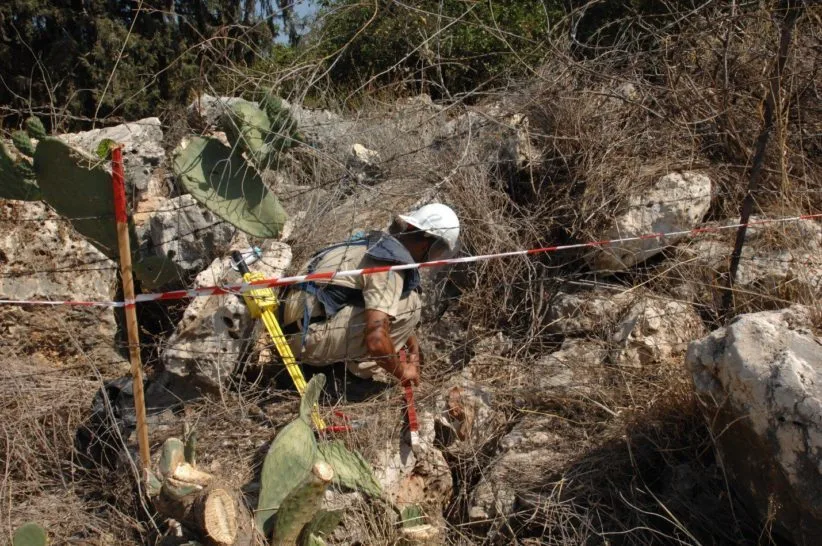NPA's reactions to the US transfer of cluster munitions to Ukraine
NPA calls on all states not party to join the Convention on Cluster Munitions without further delay.

- Norwegian People’s Aid (NPA) still works to clear submunitions resulting from the use of cluster munitions in Bosnia and Herzegovina, Cambodia, Iraq, Kosovo, Lao PDR, Lebanon, Tajikistan, and Vietnam. Our deminers are witnesses to the human suffering that cluster munitions continue to cause for decades after the end of wars, and to the barriers they create for already over-burdened health systems, agriculture, the economy and development. They know that submunition duds are the most sensitive and persistent type of unexploded ordnance. And they know that children are especially at risk of being maimed or killed by submunition duds, as they are easily attracted by their small size and curious shape, and sometimes also color.
- While deminers from NPA and other organizations were working intensively to rid the world of mines after the adoption of the Anti-Personnel Mine Ban Convention in 1997, they saw that the problems caused by submunitions from cluster munitions were taking ever more of their clearance resources. Most of the problem, however, was ̶ and is still ̶ lying in stock, ready for use. It is estimated that prior to the start of the global effort to ban cluster munitions, 95 countries stockpiled millions of cluster munitions, containing more than one billion individual submunitions. Thus, if the proliferation and use of cluster munitions continued, the result would be tens of millions of more submunition duds left in the ground and potentially a humanitarian crisis even worse than the plague caused by landmines. It was for this reason that NPA, alongside victims of cluster munitions, participated in the Oslo process to prohibit cluster munitions, sharing our knowledge from the field.
- The Oslo process culminated in 2008 with the negotiation and adoption of the Convention on Cluster Munitions, which prohibits the use, production, acquisition, transfer, and stockpiling of cluster munitions and requires the destruction of all stockpiles. The convention also requires its states parties to clear areas contaminated by cluster munition remnants and provide assistance to victims. Finally, the convention obliges states parties to promote the norms it establishes and to make their best efforts to discourage states not party from ever using cluster munitions.
- NPA is a strong supporter of both the Anti-Personnel Mine Ban Convention and the Convention on Cluster Munitions. The 111 states that thus far have joined the Convention on Cluster Munitions have done so to prevent a humanitarian crisis in the future. According to the Cluster Munition Monitor, states parties to the convention have already destroyed 1.47 million cluster munitions with 178 million submunitions, but much more than this remains in the stocks of states that are not yet party to the convention.
- NPA calls on all states not party to join the Convention on Cluster Munitions without further delay. In accordance with the object and purpose of the convention, we condemn all transfers of cluster munitions and any use of cluster munitions by any actor.
- Furthermore, it is important for NPA as a mine action operator to stress that US claims that the cluster munitions transferred to Ukraine have a failure rate no higher than 2.35%, are wrong. We base this conclusion on statistics recorded through decades of operational cluster munitions clearance in a number of countries. Used in real-world combat conditions, the failure rate will certainly be significantly higher. According to the New York Times, the US is transferring M864 shells, which contain submunitions of the types M42 and M46 in the family of DPICM (dual-purpose improved conventional munitions). The M42/M46 are old submunitions with no self-destruct mechanism, which have previously been widely used in Iraq and Lebanon, and that are known to be unreliable. NPA still clears M42 and M46 submunitions in both countries. Based on our experience from clearance, we estimate that a failure rate of at least 20% is more realistic for these submunitions. This means that if M864 rounds are used in large numbers, millions of duds may remain on the ground that have the potential to kill and maim friendly forces and civilians.
- In 2007, NPA together with the Norwegian Defence Research Establishment (FFI) and C King Associates Ltd researched and published the report M85 – An analysis of reliability, which highlighted the substantial difference between results obtained during testing and the reality seen during operations. The M85 submunition is of similar though more advanced design to the M42/M46 DPICMs, with a self-destruct mechanism to improve reliability. Even with this feature, NPA documented a failure rate for the M85 of at least 10% in combat. All types of munitions are likely to perform better during trials than in combat. However, the characteristics of most submunitions - particularly those of the DPICM family - make them particularly susceptible to increased failure rates when they are used in actual combat. Thus, the discrepancy between testing and operational performance is greater for cluster munitions than for other munitions.
- NPA is a member of The International Campaign to Ban Landmines and the Cluster Munition Coalition (ICBL-CMC), a global network of civil society organizations working for a world free of landmines, cluster munitions, and other explosive remnants of war, where all lives are protected.
